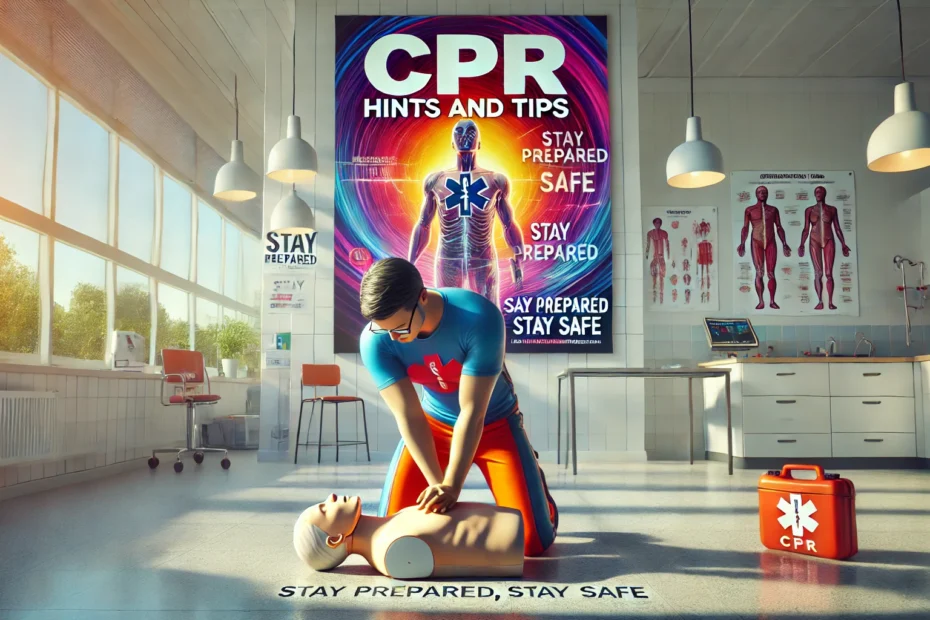Performing CPR on infants and children requires some key adjustments compared to adult CPR. Children and infants have more delicate bodies, and their heart and lung functions differ from those of adults. In a life-threatening emergency, knowing how to properly administer CPR to a child or infant can make all the difference. In this guide, we’ll highlight the key differences between CPR for adults and children, as well as provide helpful tips to ensure you’re prepared in case of an emergency.
Key Differences Between Infant, Child, and Adult CPR
1. Chest Compressions
While chest compressions are a critical part of CPR for all ages, the technique differs depending on the person’s size and age.
- Infants (under 1 year old): Use two fingers to perform chest compressions. Place your fingers just below the infant’s nipple line and press down about 1.5 inches deep. Ensure you’re using gentle, controlled force to avoid injury to the baby’s fragile bones and tissues.
- Children (1-8 years old): Use one hand to perform chest compressions, pressing down in the center of the chest to a depth of about 2 inches. If the child is larger, you may need to use both hands, but be mindful of how much force you apply.
- Adults (8 years and older): For adults, use both hands to perform chest compressions, pressing down at least 2 inches deep into the chest.
2. Compression Rate
For all age groups, the recommended rate for chest compressions is 100-120 compressions per minute. Whether you’re performing CPR on an adult, child, or infant, try to follow this tempo, which matches the beat of songs like “Stayin’ Alive” by the Bee Gees.
3. Breaths
The method for delivering rescue breaths also differs based on age.
- Infants: Cover both the baby’s mouth and nose with your mouth when giving rescue breaths. Deliver gentle puffs of air rather than full breaths, as their lungs are much smaller and require less air.
- Children: Pinch the child’s nose and cover their mouth with yours. Give two breaths, each lasting about 1 second, making sure their chest rises with each breath.
- Adults: Use the same technique as with children—pinching the nose and covering the mouth with yours—but provide deeper breaths, watching for the chest to rise.
4. CPR Ratio
For both infants and children, the recommended compression-to-breath ratio is 30 compressions followed by 2 rescue breaths, the same as for adults. If two people are performing CPR on an infant or child, the ratio changes to 15 compressions for every 2 breaths.
Tips for Performing CPR on Infants and Children
1. Be Gentle Yet Effective
Infants and children are more fragile than adults, so it’s crucial to use controlled force when performing chest compressions. While you don’t want to push too hard, compressions still need to be deep enough to circulate blood effectively. Aim for 1.5 inches for infants and 2 inches for children.
2. Know When to Use One Hand or Two
For smaller children, one hand may be sufficient for chest compressions. However, if the child is larger or you feel you aren’t able to compress deep enough with one hand, switch to using both hands. Adjust your force accordingly to prevent injury.
3. Ensure Proper Airway Management
For infants, tilt the head back only slightly to open the airway, as their necks are more delicate. For children, tilt the head further back, similar to how you would for an adult. Always check to make sure the airway is clear before giving rescue breaths.
4. Use an AED When Available
If an Automated External Defibrillator (AED) is available, use it as soon as possible. Most AEDs come with child-sized pads or a switch that adjusts the shock for younger patients. Follow the AED’s instructions carefully and resume CPR immediately after any shock is delivered.
5. Stay Calm and Get Help
Performing CPR on an infant or child can be an emotional experience, especially if it’s someone you know. However, staying calm and focused on the steps can help ensure the best possible outcome. Always call 911 or have someone else call for help while you perform CPR.
Conclusion: Be Prepared to Save a Child’s Life
Knowing how to perform CPR on infants and children can make a critical difference in an emergency. The techniques may be slightly different from adult CPR, but the same life-saving principles apply—act fast, be confident, and perform chest compressions and rescue breaths until help arrives.
To learn more or become certified in CPR, visit Delphi CPR Training Center. Their specialized courses will equip you with the skills needed to perform CPR on both children and adults, giving you the confidence to act when it matters most.
